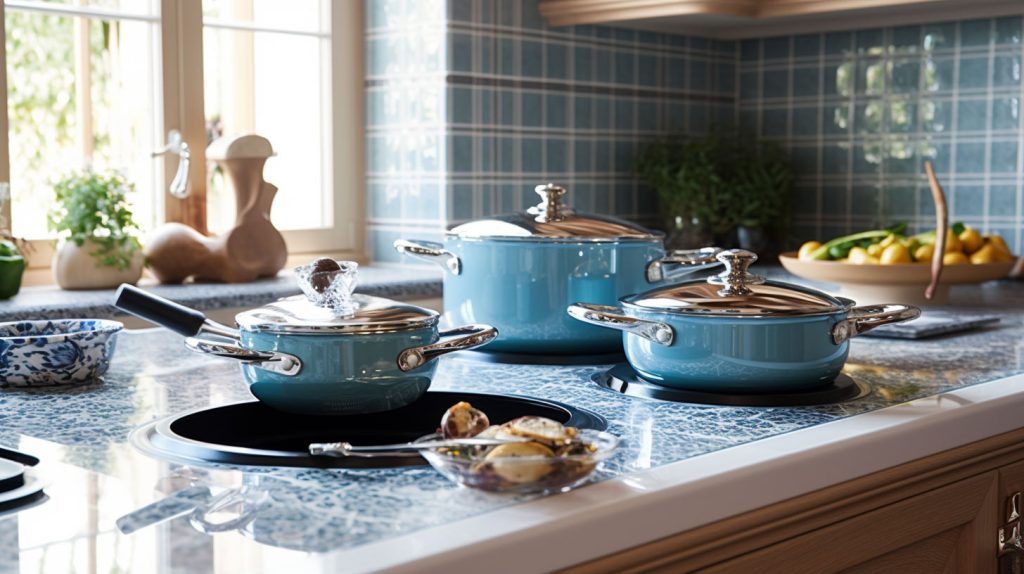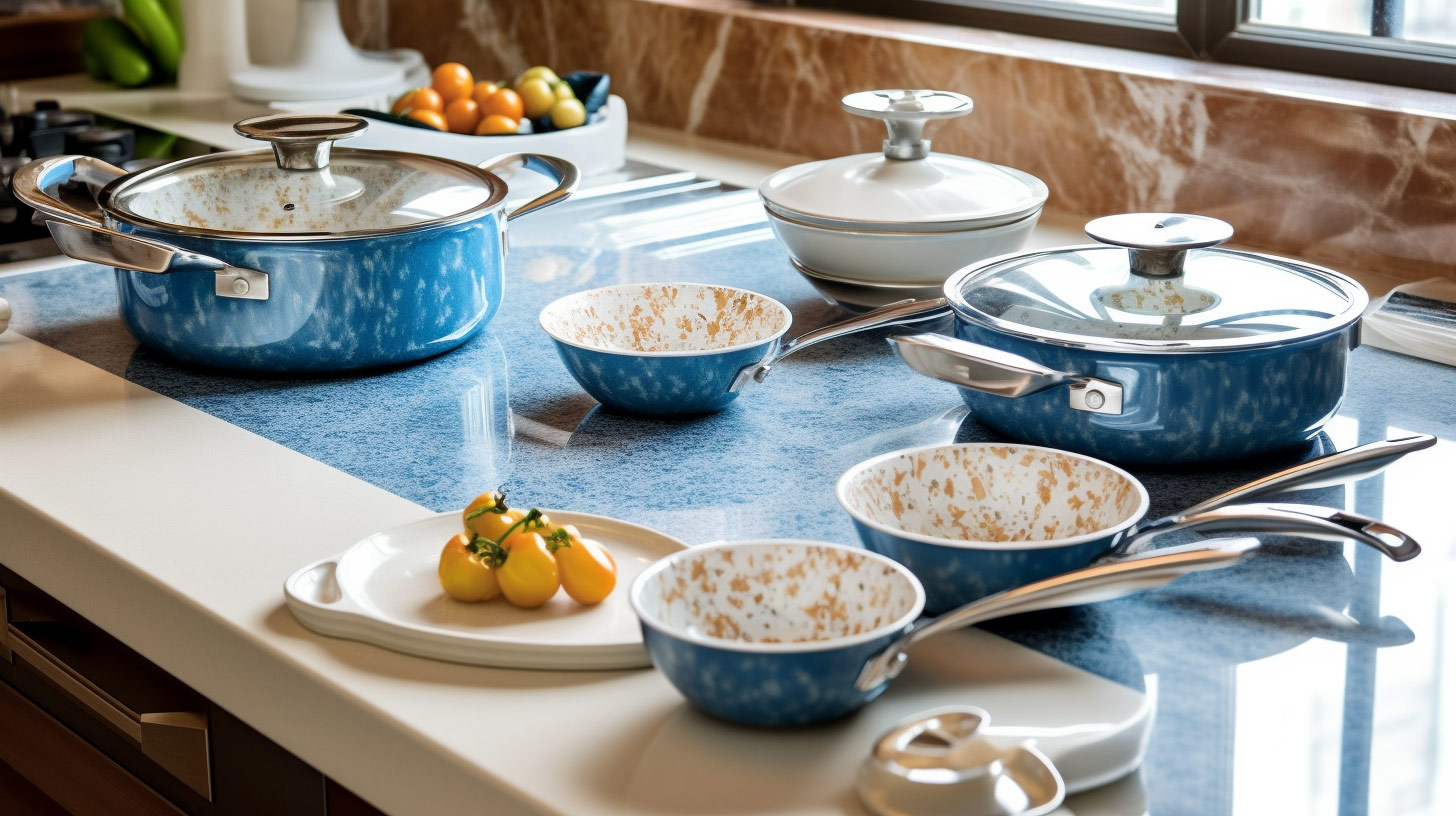When it comes to choosing cookware for your kitchen, health and safety should be top priorities. With the wide variety of options available, it’s important to understand the benefits and potential risks associated with different materials. In this article, we will delve into two popular choices: granite and ceramic cookware. We will explore their properties, health considerations, and help you make an informed decision about which option is the healthier choice for you and your family.
Introduction to Granite and Ceramic Cookware:
Granite cookware is made by combining a granite-like mineral coating with a metal base. It offers excellent heat distribution and is known for its non-stick properties. Ceramic cookware, on the other hand, is made from a clay mixture that is kiln-fired at high temperatures. It features a non-stick surface that is free from harmful chemicals like PFOA and PTFE. Both types of cookware have gained popularity due to their durability and aesthetic appeal.
Health Considerations for Cookware Materials:
When considering the health aspects of cookware, it is crucial to assess factors such as chemical composition, non-stick coatings, and potential leaching into food. Additionally, factors like heat conduction and even cooking are essential for maintaining the nutritional value of your meals.
Understanding Granite Cookware:
Granite cookware typically features a non-stick surface that requires less oil for cooking, making it an appealing option for health-conscious individuals. The mineral coating used in granite cookware is generally safe and doesn’t release harmful fumes when exposed to high temperatures. However, it’s essential to ensure that the metal base of the cookware is of high quality to prevent potential metal leaching.
Unveiling Ceramic Cookware:
Ceramic cookware has gained popularity as a healthier alternative to traditional non-stick cookware due to its non-toxic nature. It is made from natural materials like clay and sand, and its non-stick surface is achieved through a glazing process. Ceramic cookware is generally free from harmful chemicals, such as PFOA and PTFE, which can be released when using certain non-stick coatings.
Comparing Health Benefits and Safety Factors:
Both granite and ceramic cookware have their advantages and considerations when it comes to health benefits and safety factors. Granite cookware is known for its durability and excellent heat distribution, but it’s important to choose a reputable brand that ensures a high-quality metal base to prevent potential metal leaching. Ceramic cookware, on the other hand, offers a non-toxic cooking surface and is generally free from harmful chemicals. However, it may not distribute heat as evenly as granite cookware.
When it comes to non-stick properties, both options perform well, reducing the need for excessive oil or fat in cooking. However, over time, the non-stick properties of ceramic cookware may deteriorate, requiring replacement or re-glazing.

Health Considerations
Ensuring that your cookware is safe for cooking is essential. Both granite and ceramic cookware are generally regarded as safe options. However, there are a few things to consider. Ceramic cookware is made from clay and coated with a glaze, which can contain trace amounts of heavy metals like lead and cadmium. On the other hand, granite cookware is typically made with a non-stick coating reinforced with mineral particles. It is important to choose high-quality, certified cookware to minimize the risk of leaching harmful substances.
Durability and Longevity
The durability of cookware is an important factor, as it directly impacts its lifespan and value for money. Ceramic cookware is known for its scratch-resistant surface, making it less prone to damage. However, it can be susceptible to chipping if mishandled. On the other hand, granite cookware is highly durable and resistant to scratches. It can withstand high temperatures, making it suitable for various cooking methods, including stovetop and oven.
Reading this article is also recommended : Fruit is Better or Fruit Juice: Which One?
Environmental Impact
Considering the environmental impact of your cookware choice is becoming increasingly important. Ceramic cookware is typically made from natural materials, making it a more eco-friendly option. However, the manufacturing process and disposal of damaged ceramic cookware can have negative environmental consequences. Granite cookware is often produced with a focus on sustainability, using recycled materials and minimizing waste during production.
Heat Distribution and Cooking Performance
Even heat distribution is crucial for achieving optimal cooking results. Ceramic cookware tends to distribute heat evenly, allowing for consistent cooking. It retains heat well, which can be advantageous for recipes that require longer cooking times. Granite cookware also provides excellent heat distribution, ensuring that your food is cooked evenly. Its non-stick surface facilitates easy food release, making it a preferred choice for low-fat cooking.
Making an Informed Choice for Your Kitchen:
Ultimately, the choice between granite and ceramic cookware depends on your specific needs and preferences. If even heat distribution and long-lasting durability are important to you, granite cookware may be the better choice. On the other hand, if you prioritize non-toxicity and the absence of harmful chemicals, ceramic cookware may be the healthier option.
Regardless of the cookware you choose, it’s essential to follow proper care and maintenance instructions to ensure longevity and safe usage. Regularly inspect your cookware for any signs of damage or wear and replace it if necessary.
Conclusion:
When it comes to choosing cookware that promotes a healthier cooking experience, both granite and ceramic options have their merits. While granite cookware offers excellent heat distribution and durability, ceramic cookware provides a non-toxic cooking surface and is free from harmful chemicals. Consider your specific needs, prioritize health factors, and choose a reputable brand to make an informed decision that suits your kitchen and cooking style. Remember, taking care of your cookware and using it properly will contribute to a healthier and more enjoyable culinary experience.
FAQ
Is granite cookware safe for cooking?
Yes, granite cookware is generally safe for cooking. However, it is important to choose high-quality, certified cookware to ensure that it is free from harmful substances. Cheaper or poorly made granite cookware may have coatings that contain chemicals that can leach into food. Look for cookware that is PFOA and PTFE-free to minimize any potential health risks.
Is ceramic cookware a good non-stick option?
Yes, ceramic cookware can provide a non-stick cooking surface. The ceramic coating creates a smooth surface that helps prevent food from sticking, making it easier to cook with less oil or fat. However, it is important to follow the manufacturer’s instructions for proper use and care to maintain the non-stick properties and avoid damaging the ceramic coating.
How do I clean and maintain granite cookware?
Cleaning granite cookware is relatively simple. It can be washed with mild soap and water using a soft sponge or cloth. Avoid using abrasive cleaners or harsh scrubbing tools, as they can damage the non-stick coating. Also, avoid stacking heavy items on top of granite cookware to prevent scratches. With proper care and maintenance, granite cookware can last for a long time.
Can ceramic cookware be used in the oven?
Yes, many ceramic cookware pieces are oven-safe. However, it is important to check the manufacturer’s instructions for specific temperature limits and guidelines. Some ceramic cookware may have temperature restrictions or recommendations for safe oven use. Always use oven mitts or pot holders when handling hot ceramic cookware to prevent burns.


1 Comment